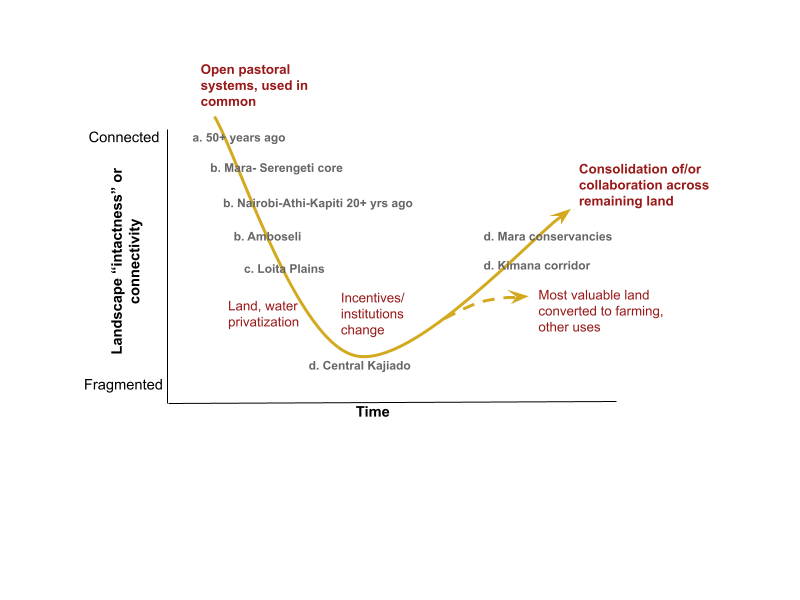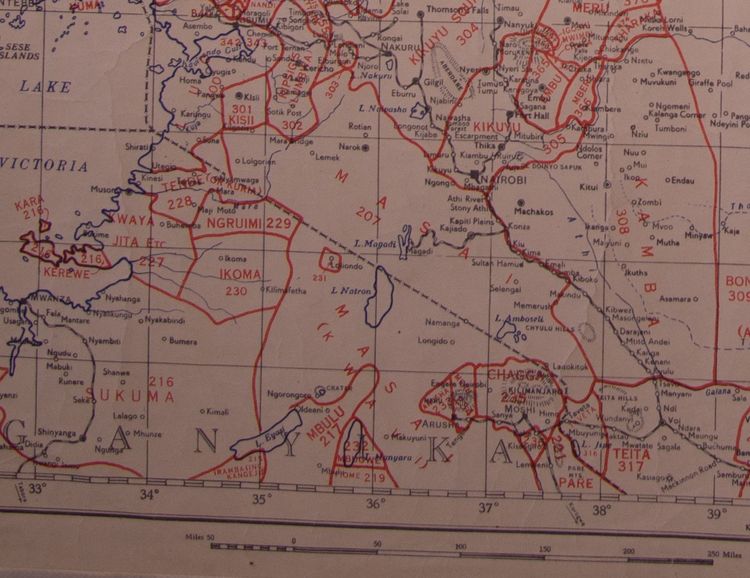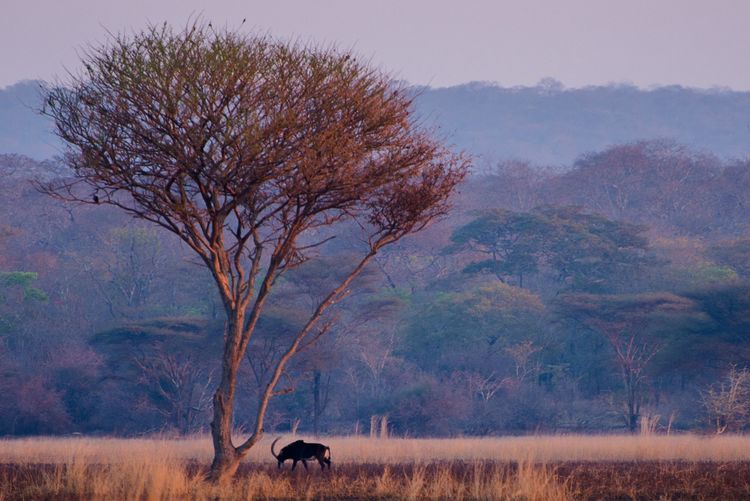Paper summary: Fencing and subdivision across Kenya's southern rangelands jeopardizes biodiversity conservation and pastoral livelihoods

I'm only now catching up on writing up summaries for a number of recently published papers, and I'm starting here, with this paper led by Peter Tyrrell from last year.
In Tyrrell et al. 2022, we used on an open-access spatial-temporal database to highlight that over 40,000 km of fencing have proliferated on private land across the famous Amboseli, the South Rift, Loita, and Mara ecosystems. This fencing is cutting down the ability of wildlife and livestock to move across the landscape and access the critical resources they need to survive.

In addition to fences, privatisation and other forces have led to the permanent scattered presence of livestock in >30,000 enclosures across the landscape. Often, this has led to the rapid degradation of critical wet and dry season grazing areas.
The loss of space and mobility for wildlife and pastoralists has significant ecological and social impacts. Ecologically, fencing and land privatization have led to habitat fragmentation, loss of connectivity, and a decline in wildlife populations. Socially, pastoralists have lost access to grazing land and water resources, leading to financial and food insecurity.

Indeed this was highlighted in recent years where the loss of mobility greatly impacted rangeland health, leading to one of the largest (human-magnified) droughts in recent times, with significant economic losses and financial stresses for families, in addition to wildlife population crashes.
We found that much of this loss of space is the result of the privatization and sale of land, with property values in many areas far outweighing the economic returns from livestock and/or ecotourism. Most of this information is not new to conservation and rangeland NGOs. Projects are underway across the region to reverse or stabilize this trend with various tools from land-use planning, ecotourism, and carbon credits.
However, we argue that this is not enough - the rangelands of southern Kenya will not remain open and healthy for the vital wildlife and pastoral migrations (which have all but collapsed) unless more is done to twin locally-led institutions with far larger landscape-scale economic options and planning to preserve space for wildlife and pastoralists.
Kenya's rangelands are not the first to undergo this type of transition. Research by Robin Reid et al. demonstrated that this transition (see figure below) has occurred to varying degrees, in many rangelands across the globe. The key for Kenya is that the same mistakes don't have to be made, and it is possible to undergo this transition with significantly few negative outcomes. There are a number of people, communities, organisations, businesses, and government efforts to ensure this is the case, and we are committed to supporting these efforts as best we can.

If you want to learn more about the opportunities that exist to transition southern Kenya's rangelands, you might want to read this article on why our research shows that "What’s good for livestock can be good for wildlife".
If you enjoyed this post, please consider sharing it with others who might be interested too. If you want to connect, I'm always happy to chat, so get in touch, or subscribe!





